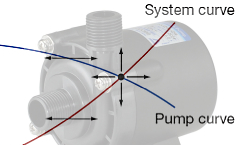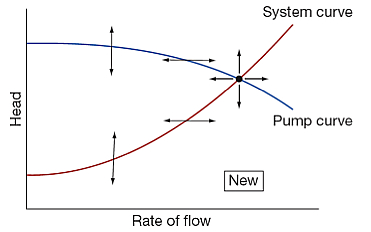
Building Better Pumping Systems: Optimizing New Designs
By Hydraulic Institute Members and Pump Systems Matter
Fluid Power design hydraulics maintenanceAn opportune time to carefully analyze system requirements and reduce unnecessary margins is during the design stage.

Although most pump systems operate longer than 15 years, the initial costs represent a small portion of the total expenditures needed to operate these systems throughout their life.
Optimum design and efficiency are in the best interest of industrial facilities, which rely heavily on pumping systems for the operation of most processes. New pumping systems can be designed with inherent cost reduction features that may be cost prohibitive to implement on existing systems. An opportune time to carefully analyze system requirements and reduce unnecessary margins is during the design stage.
When designing pumping systems, facility engineers should recognize that initial design, energy and maintenance costs are directly dependent on the diameters selected for the piping and system components. Piping diameters and components affect the:
• Economy of the entire installation (pumps and system);
• Required lowest flow velocity for the application (e.g., avoid sedimentation);
• Required minimum diameter for the application (e.g., solids handling);
• Maximum velocity to minimize erosion in piping and fittings; and
• Plant standard pipe diameters.
For a system requiring control features, the design engineer choose selects between pump-centric controls (such as VFDs) or valve-centric (bypass or recycle line). Both methods will alter the operating point, but pump-centric controls provide a much greater opportunity to reduce costs by matching the pump curve and the operating point.
When multiple pumps are operated in parallel, the composite pump curve can also be altered by turning some pumps off, thereby shifting the operating point. Shifting the system curve via system design can also affect the operating point resulting in reduced initial and/or lifecycle costs.

The Optimal Operating Point and Design
For every pump system, there is an operating point that achieves the lowest cost option. This is known as the optimal pumping system operating point (OPSOP).
Pumping systems have a seemingly infinite number of design variants. Numerical optimization can help determine operating points near the OPSOP by sifting through a small fraction of possible designs. More importantly, numerical optimization allows for the cost of pump and system over sizing to be quantified before the design is finalized. This process includes:
• Numerically perturb the engineer’s design;
• Repeatedly reanalyze the system hydraulically;
• Defining the shape of the design space;
• Identifying combinations of design parameters that reduce cost; and
• Presenting the lowest cost option to the engineer.
